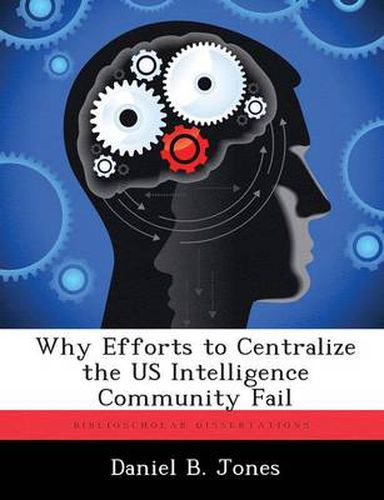Readings Newsletter
Become a Readings Member to make your shopping experience even easier.
Sign in or sign up for free!
You’re not far away from qualifying for FREE standard shipping within Australia
You’ve qualified for FREE standard shipping within Australia
The cart is loading…






This title is printed to order. This book may have been self-published. If so, we cannot guarantee the quality of the content. In the main most books will have gone through the editing process however some may not. We therefore suggest that you be aware of this before ordering this book. If in doubt check either the author or publisher’s details as we are unable to accept any returns unless they are faulty. Please contact us if you have any questions.
Prior to World War II, the formal collection and exploitation of foreign intelligence in the United States fell almost exclusively in the domain of the military. The attack on Pearl Harbor and other events during that war created a growing consensus that the nation required a central authority to manage national intelligence pertinent to multiple departments of the government. In response, the national security act of 1947 created the central intelligence agency and the position of director of central intelligence. Over the next half-century, numerous commissions and panels found neither the agency nor the director ever wielded effective control over the diverse and growing intelligence community. In response to such findings, presidents issued National Security Council directives and executive orders and congress signed multiple bills to reinforce the CIA and DCI’s authority over the intelligence community, but the problems of decentralization persist. The terrorist attack of 9/11 provided sufficient impetus to make the first significant structural changes to the failed us intelligence community since 1947. To evaluate the prospects of the national intelligence reform act of 2004 to establish effective central control over the community it is helpful to identify the factors that frustrated previous reform efforts.
$9.00 standard shipping within Australia
FREE standard shipping within Australia for orders over $100.00
Express & International shipping calculated at checkout
This title is printed to order. This book may have been self-published. If so, we cannot guarantee the quality of the content. In the main most books will have gone through the editing process however some may not. We therefore suggest that you be aware of this before ordering this book. If in doubt check either the author or publisher’s details as we are unable to accept any returns unless they are faulty. Please contact us if you have any questions.
Prior to World War II, the formal collection and exploitation of foreign intelligence in the United States fell almost exclusively in the domain of the military. The attack on Pearl Harbor and other events during that war created a growing consensus that the nation required a central authority to manage national intelligence pertinent to multiple departments of the government. In response, the national security act of 1947 created the central intelligence agency and the position of director of central intelligence. Over the next half-century, numerous commissions and panels found neither the agency nor the director ever wielded effective control over the diverse and growing intelligence community. In response to such findings, presidents issued National Security Council directives and executive orders and congress signed multiple bills to reinforce the CIA and DCI’s authority over the intelligence community, but the problems of decentralization persist. The terrorist attack of 9/11 provided sufficient impetus to make the first significant structural changes to the failed us intelligence community since 1947. To evaluate the prospects of the national intelligence reform act of 2004 to establish effective central control over the community it is helpful to identify the factors that frustrated previous reform efforts.